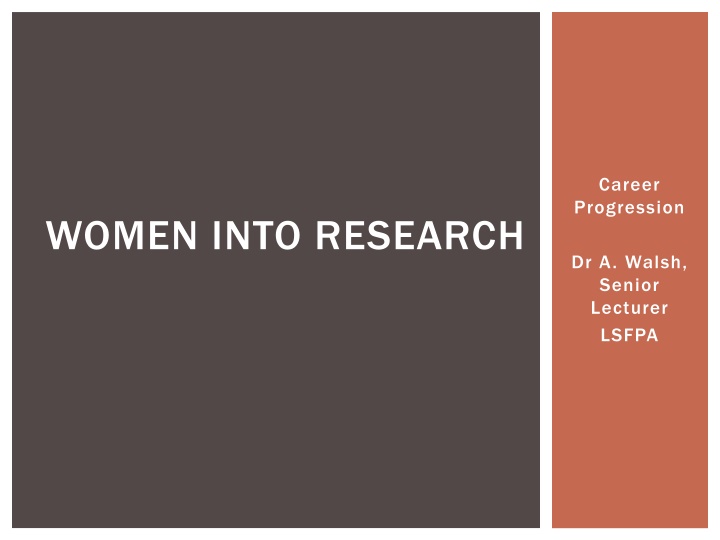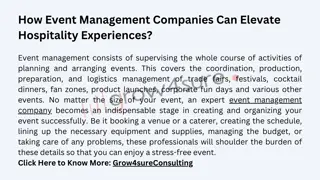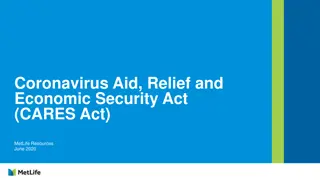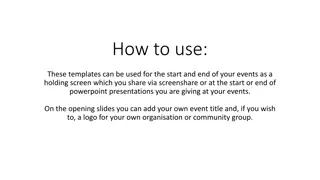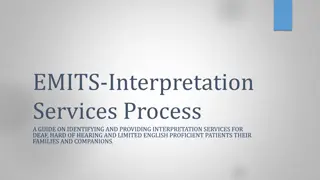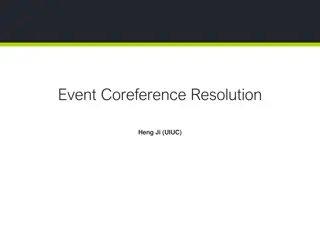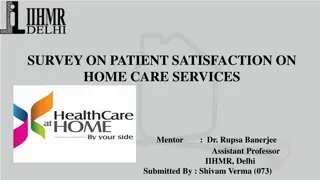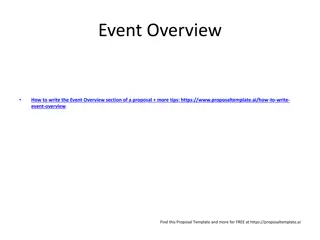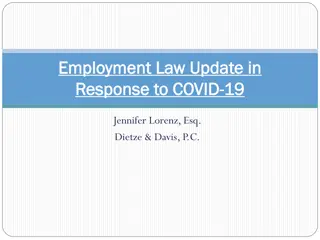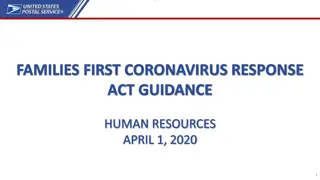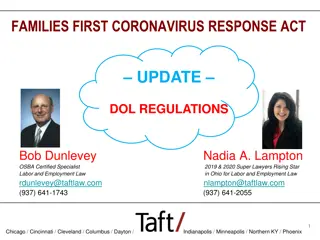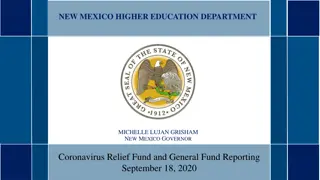Telephonic Meeting on Coronavirus Event - March 26, 2020
This content provides insights into a telephonic meeting discussing the impact of the coronavirus event on various aspects including mitigation tactics, ridership updates, and daily ridership variances for buses, light rail, and ferries. The meeting agenda covers vital topics aiming to support health, safety, and operational continuity during the crisis.
Download Presentation

Please find below an Image/Link to download the presentation.
The content on the website is provided AS IS for your information and personal use only. It may not be sold, licensed, or shared on other websites without obtaining consent from the author.If you encounter any issues during the download, it is possible that the publisher has removed the file from their server.
You are allowed to download the files provided on this website for personal or commercial use, subject to the condition that they are used lawfully. All files are the property of their respective owners.
The content on the website is provided AS IS for your information and personal use only. It may not be sold, licensed, or shared on other websites without obtaining consent from the author.
E N D
Presentation Transcript
Career Progression WOMEN INTO RESEARCH Dr A. Walsh, Senior Lecturer LSFPA
THIS SESSIONS QUESTIONS Find out confidentially what is stopping women from disseminating and publishing. How do women view dissemination and publishing? Are women choosing other areas of university life to fill in their time, rather than dissemination and publishing? What barriers are perceived/actual surrounding dissemination and publishing? What forms of collegial support are required to disseminate and publish? Not just about publishing, but collaborations, networks, fund- raising, dissemination at conferences, etc.
REFLECTION Pairs: How do you perceive publishing/ dissemination and its effects on your career progression?
AIMS Barriers/ Threats Opportunities and suggestions Sharing experiences See: The essential guide to moving up the academic career ladder , a downloadable e- book published by jobs.ac.uk (2014)
HIDDEN COSTS OF BEING A FEMALE ACADEMIC The development of qualitative research on this topic has been useful in contextualizing statistics and quantitative research concerning the experiences of women working within academia and shedding some light on the hidden difficulties Education institutions might face in their career (Morley, 1994; Valian, 2004; Skelton, 2004; Hoskins, 2010). that women employed in Higher Research demonstrates that the often gendered experiences of career support, family circumstances and collegiality influence productivity and ambition (Baker, 2010). Evidence also suggests that, for instance, failure to gain promotion is frequently explained in terms of lack of confidence to put themselves forward and women often have had to work harder to reject the feeling that encountering obstacles in their career progression is objective evidence of their inferior abilities. This is often symptomatic of a broader tendency in the structure vs. agency debate to reduce major structural inequalities to the level of personal qualities and individual choices (Morley, 1994). [Deiana, 2013: p3] Source: Research Report: Hidden Costs of Being a Female Academic.
BARRIERS TO PROGRESSION Exercise with barriers: Bulls- eye Start with given barriers (based on the sources) Add own experiences of barriers or threats to career progression
SOURCE: Kelly Coate, Camille B. Kandiko Howson and Tania de St Croix (2015) Mid-career academic women: Strategies, choices and motivation. Leadership Foundation for Higher Education. London. Available at: https://www.lfhe.ac.uk/download.cfm/docid/00E690E 7-E494-4F93-8981F9D2CE86200C
BARRIERS IDENTIFIED BY COATES ET AL Career planning: strategy and opportunity. Academic women have multiple and varied approaches to career planning, and tend to take an individual approach to it. Some have strategic and organised plans, whereas others feel confused or stuck , often blaming themselves or communicating a sense of failure. (2015: 5)
Gendered motivation and prestige. Women are motivated by diverse factors, some of which map onto what is valued and considered prestigious in academic life, while others are less recognised institutionally. Many of the women we interviewed felt uncomfortable about engaging in self-promotion and communicating their successes. (2015:5)
Children, caring and worklife balance. Many womens careers are strategically planned and organised around existing and expected responsibilities for children and other relatives. While barriers to women s career development should not be equated to childcare, this continues to be an important and highly gendered factor for many. (2015:5) https://www.lfhe.ac.uk/download.cfm/docid/00E690E7-E494- 4F93-8981F9D2CE86200C https://www.timeshighereducation.com/news/neglected-mid- career-women-need-more-recognition
At times, they may need encouragement, a push or simply a lack of barriers in order to aspire to the next level. At other times, they may need to be valued for their current work without any implied or explicit pressure to aim for more prestigious roles. It is also important to think further about the individualistic nature of academic careers. This individualism exacerbates the sense of having to be ambitious, to strategise and make plans, and to juggle everything. It also reinforces the belief that it is the responsibility of the individual as to whether progression is achieved or not, thus downplaying the role of structural inequalities and barriers that are related to gender, class, race and ethnicity. Perhaps what is most important is that mid-career academic women are given regular space, encouragement and support to assess their career goals and aspirations as they change and develop. Women should not be pigeonholed as being either ambitious or not, as they are very likely to change their priorities at different times, and need to be supported in their current roles as well as in their plans to develop themselves and aspire to new roles. (2015: 12)
WRAPPING UP Any opportunities to be shared? Any practical advances that we can make as a cohort?
FURTHER RESOURCES: Baker, M. (2010). Career confidence and gendered expectations of academic promotion. Journal of Sociology, 46(3), 317-334. Deiana, M. (2013) Research Report: Hidden Costs of Being a Female Academic. A Study Commissioned by the Athena SWAN Team, School of Psychology, Queen s University Belfast. http://www.qub.ac.uk/schools/media/Media,424063,en.pdf http://blogs.warwick.ac.uk/researcherlife/entry/gender_and_academic/ http://www.theguardian.com/higher-education- network/blog/2013/apr/26/women-higher-education-career-progression http://www.theguardian.com/higher-education- network/blog/2012/may/24/why-women-leave-academia http://www.qub.ac.uk/schools/media/Media,424063,en.pdf https://www.lfhe.ac.uk/en/research-resources/publications/engage-38-- summer-2015/projects-research-resources/mid-career-academic-women.cfm http://usir.salford.ac.uk/19512/
